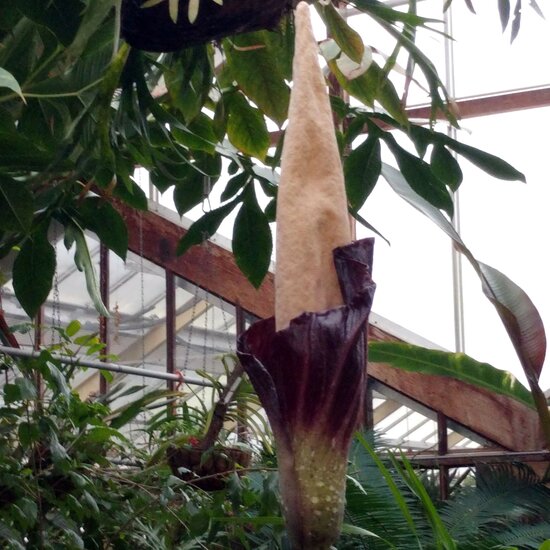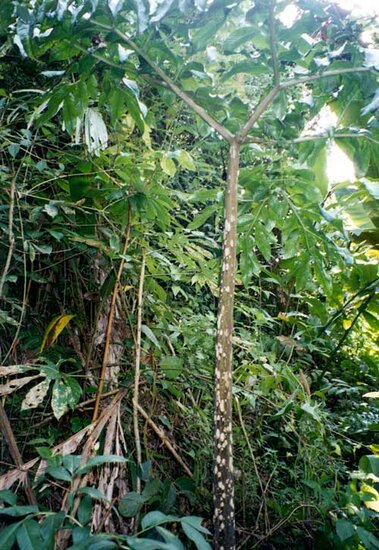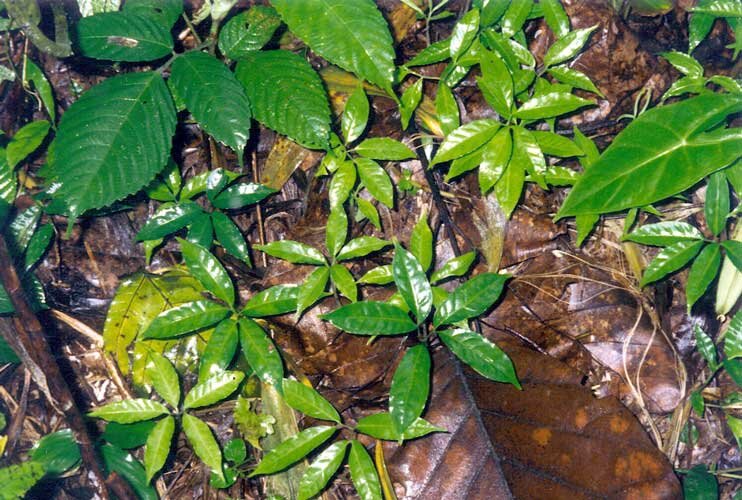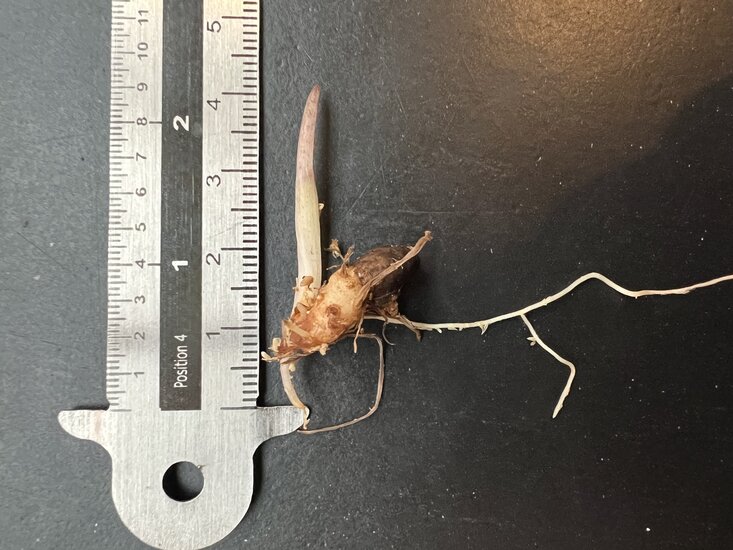Do you have a question about this product?
Ask us your question








Product description
This species is among the largest Amorphophallus species and is similar in size to the well-known Amorphophallus titanum. It is a rare species from western Java and is also not widely kept in botanical gardens. Unfortunately, due to logging, less and less of its natural habitat remains, threatening the species. The size of the leaves, underground tuber and inflorescence is impressive. The spotted petiole can grow up to 20 cm thick and to a height of 3.5 metres. The umbrella-shaped leaf can grow 3 to 4 metres wide in the process. Beneath the soil, a tuber forms and grows larger and larger. Mature tubers can weigh more than 20 kg with a diameter of 40 cm. After 5-9 years, however, a tuber can be large enough to produce an inflorescence. This consists of a green-purple spathe containing a light-coloured spadix. The height of the inflorescence can reach up to 3 metres and a very unpleasant smell is emitted from the inner parts, which can be detected by insects from miles away. First, the female flowers mature, allowing attracted insects (especially flies) to leave pollen from another inflorescence on the pistils. This is followed by the maturation of the male flowers that shed pollen so that it can be dispersed to another inflorescence. As a result, self-pollination is not possible, so there must always be at least 2 inflorescences at the same time for pollination and hence fruiting.It is a relatively easy species to keep, but high temperature (30-33grC) and humidity (>80%) are required for flowering. Growth can take place at lower temperatures and humidity, making it suitable as a houseplant. While doing so, ensure a highly permeable soil with moss, perlite and orchid soil. The soil can be kept constantly moist and this also applies during the dormant period when no leaves are visible for some time.
Sowing description: The already germinated seed can be transferred directly into well-drained soil with organic matter. A temperature of 25-30grC is optimal for initial development.
Product specification
Family:
Araceae
Scientific name:
Amorphophallus decus-silvae
Common name:
Aroid
Native to:
Java, Indonesia
Sowing time:
All year round
Difficulty level:
Intermediate
Minimum temperature:
15 degrees Celsius
Do you have a question about this product?
Ask us your question
Product specification
Family:
Araceae
Scientific name:
Amorphophallus decus-silvae
Common name:
Aroid
Native to:
Java, Indonesia
Sowing time:
All year round
Difficulty level:
Intermediate
Minimum temperature:
15 degrees Celsius
Add review
Write a review about this product.
Reviews
No reviews yet


